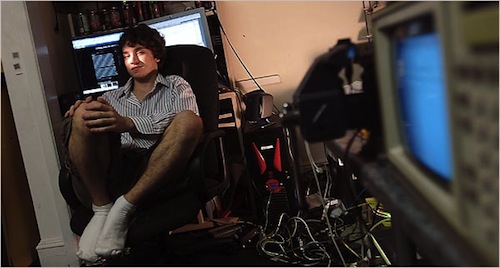It isn’t always sunshine and roses however, with a multitude of problems plaguing the PS3’s path to success. An issue to do with the system’s internal clock caused widespread lockouts in first to third generation PS3 consoles, preventing players from accessing the Playstation Network, playing offline games, or viewing/syncing trophy information. Though Slim models were not affected, the leap year bug (or ApocalyPS3 as it was known by some) caused a surge of mistrust in Sony and the Playstation brand, despite the company’s swift resolution of the issue.
Sony hit a major stumbling block later in April 2011 with the Playstation Network mysteriously shutting down. Sony then admitted a few days later that the PSN had been the victim of a malicious external intrusion and that users’ personal information was at risk. What was worse was that Sony were unable to rule out the possibility of the hackers getting away with credit and debit card information, bringing up big issues about the financial safety of the service and online shopping in general. Gamers were generally outraged by the length of time it took Sony to restore the service to full functionality, and the wait Sony made before announcing that personal information had been stolen brought the company’s credibility into question. Despite the blunder though, Sony have managed to pull through it stronger than ever. The Playstation Network and general brand seems sturdier than ever, and Sony’s huge welcome back offers of free content to PSN users has helped them largely regain what credibility had been lost.
The security of the PS3 is not exactly a one time issue though, with concerns of piracy and unsigned code plaguing the console at regular intervals. Sony initially began by removing the Other OS installation feature offered on phat Playstation 3’s when they designed the slim models. The feature was retroactively removed from older PS3s by a mandatory system update. This alone was cause for irritation, with many members of the gaming community feeling disgruntled that they were losing a feature they had already paid for. Sony’s discretion was proven well advised though, when the now infamous George “Geohot” Hotz managed to hack the hardware via the Other OS functionality. Geohot was then the focus of a vicious court case filed by Sony that was later to become a highly divisive issue among gamers. Some felt Geohot was justified in his scientific curiosity of how to get the most out of his console, but others saw it as little more than someone attempting to open the flood gates to piracy. Many custom firmware solutions have since flooded the shadier side of the game market, but Sony have been resolute in not letting this affect their quality or quantity of software and entertainment experiences on the Playstation 3.
Sure, there have been some problems along the way, but the PS3 is beginning to claw its way to the top of the roost bit by bit. Initially falling behind the Xbox 360 and Wii in terms of sales, the newly branded Playstation experience is attracting more members by the day. With all the consoles struggling to keep to the speculation of a ten year console cycle, the Playstation 3 is the only system that may be able to do it. With Nintendo announcing the Wii U and the Xbox 360 needing to rely on novelty control methods to sustain interest in its brand, the PS3 is the only console that is truly powerful and versatile enough to sustain itself for another few years based on its own merits. Granted, the Playstation Move was an attempt by Sony to corner the motion controlled market, but it was based on the existing Sony technology employed in the Eyetoy, and effectively built on the Wii’s remote mechanics without going overboard. Only time will tell what Sony will come up next. With the NGP set to storm the handheld market in the coming year, the PS3 continues going strong, ready to wow us with its coming flurry of high quality titles.















